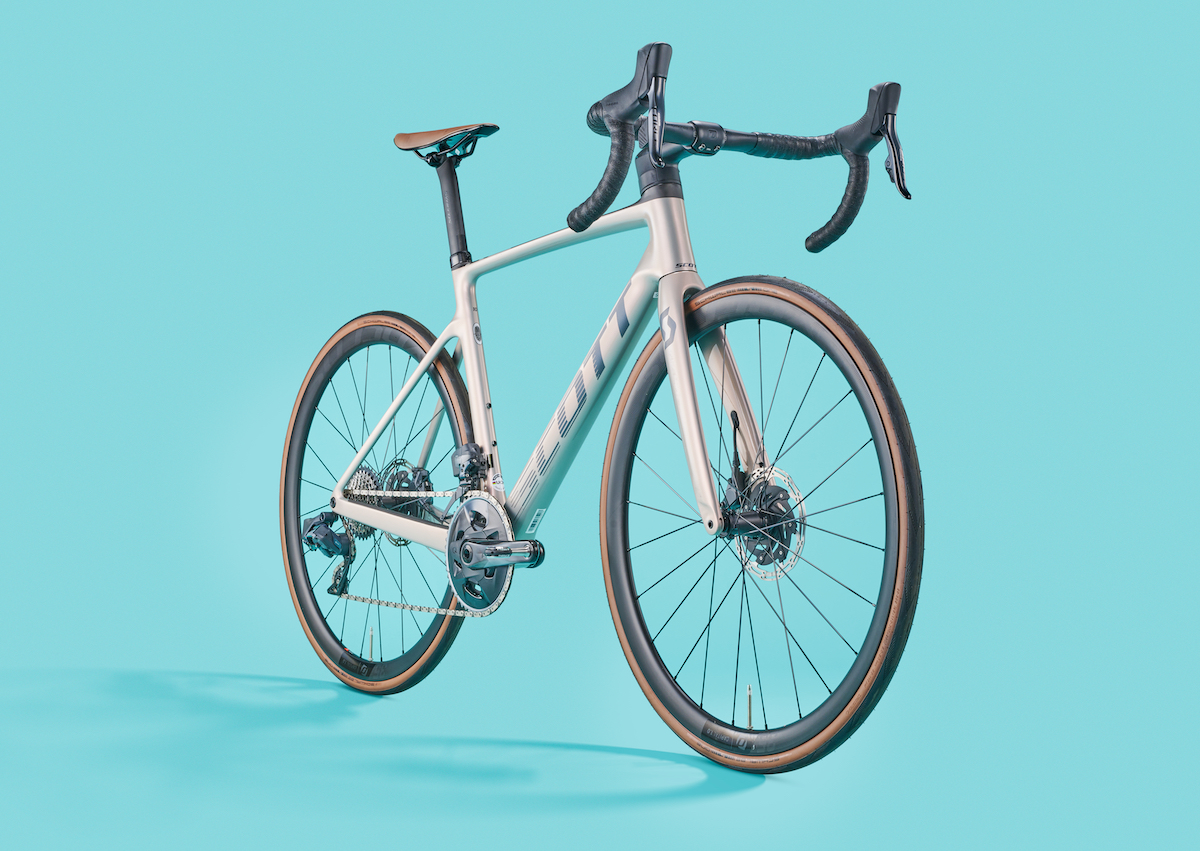
The Scott Addict RC 10 sits three down from the top in the eight bike Addict range that all use the Swiss company’s HMX carbon fibre. From the bikes used by the WorldTour DSM team to the entry level RC 40, the £10,000 price difference between bottom and top is a result of differing groupsets, wheels and finishing kits. On looks alone it can be hard to tell where the money is going as a browse through the Scott site makes it hard to distinguish between the eight bikes. Both the nomenclature and the conservative - okay, let’s be honest, dull - paint jobs give an identic feel across the range.
But don’t let the 10’s name or grey / beige paint job put you off taking a closer look. This £7,599 road bike has some lovely little integrations and design touches that rather pleasingly revealed themselves over time. Like finding a five pound note in the pocket of some old trousers, each discovery put a smile on my face and made me think more of the bike.
Scott Addict RC 10 - Frame
Underneath that slightly drab paint job is HMX carbon fibre. A material that is apparently unique to Scott bikes. If HMF is high modulus fibre, HMX is the same but with added x factor. This is a blend of fibres that are two Um (micrometres, an almost imperceptible measurement) slimmer than standard high modulus fibre. Over the whole frame this tiny difference adds up, reducing the weight of a frame with comparative tensile strength to an HMF build. Our test bike tipped the scales at 7.60kgs
Tube shapes and placement, and overall look resemble many other road bikes currently on the market. Truncated tubes are de facto, as are lowered seat stays and a bulbous headtube. Both the Vitus Venon Evo and Specialized SL8 look similar, and it wouldn’t be hard to find others too. This isn’t a criticism. The UCI gave bike designers a box in which to design a frame and manufacturers have unsurprisingly come to similar conclusions. The good thing is, it works.
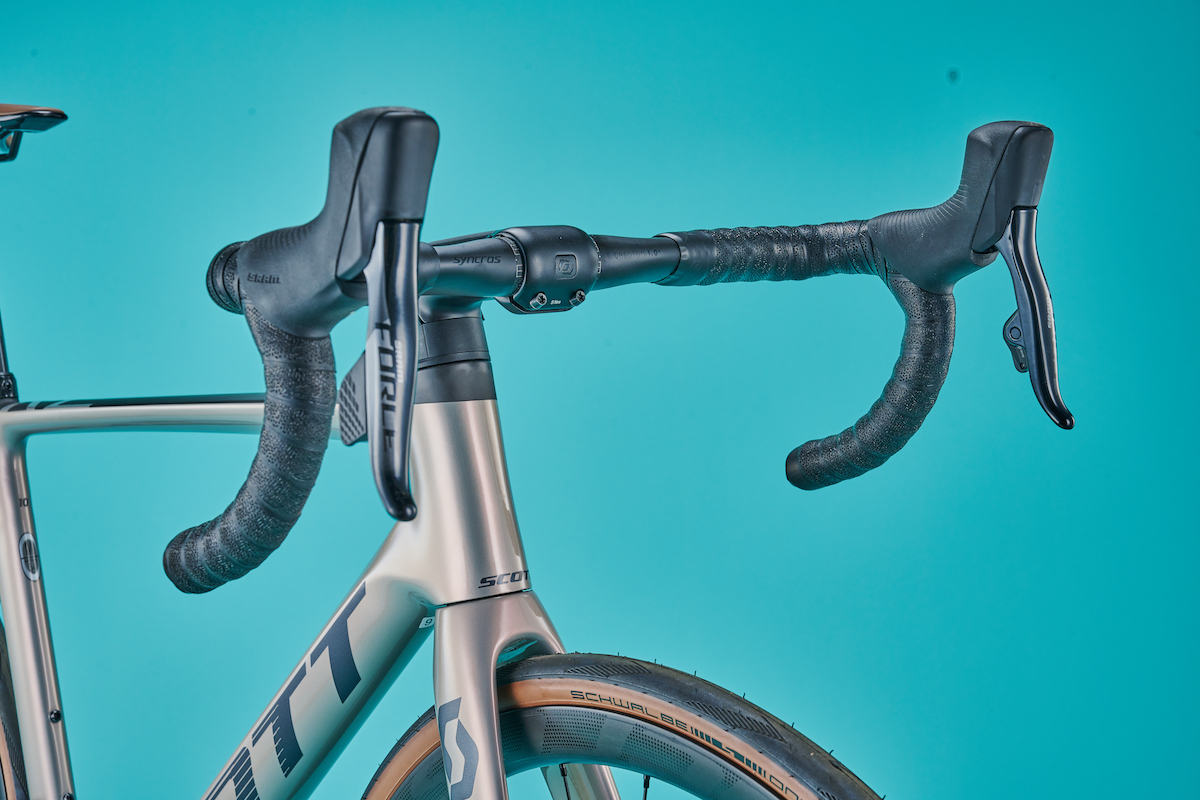
One design element that caught my attention was the rear mech sandwich dropout. Instead of bolting an alloy hanger to the back of the rear dropout with little screws, the hanger slots into the rear dropout before the thru axle cap holds it in place along with two fixation bolts.
The thru axle itself then slots through and is screwed into the cap. On inspection it looks like a much stronger and robust rear end eliminating the weak point associated with more traditional bolt on mech hangers. The question is, is it so strong that it will deflect forces into the frame? The hanger itself is minimalist, so it should bend or break if it takes a big sideways impact, rather than passing it into the frame. No rear mech hangers were harmed during the testing of this bike.
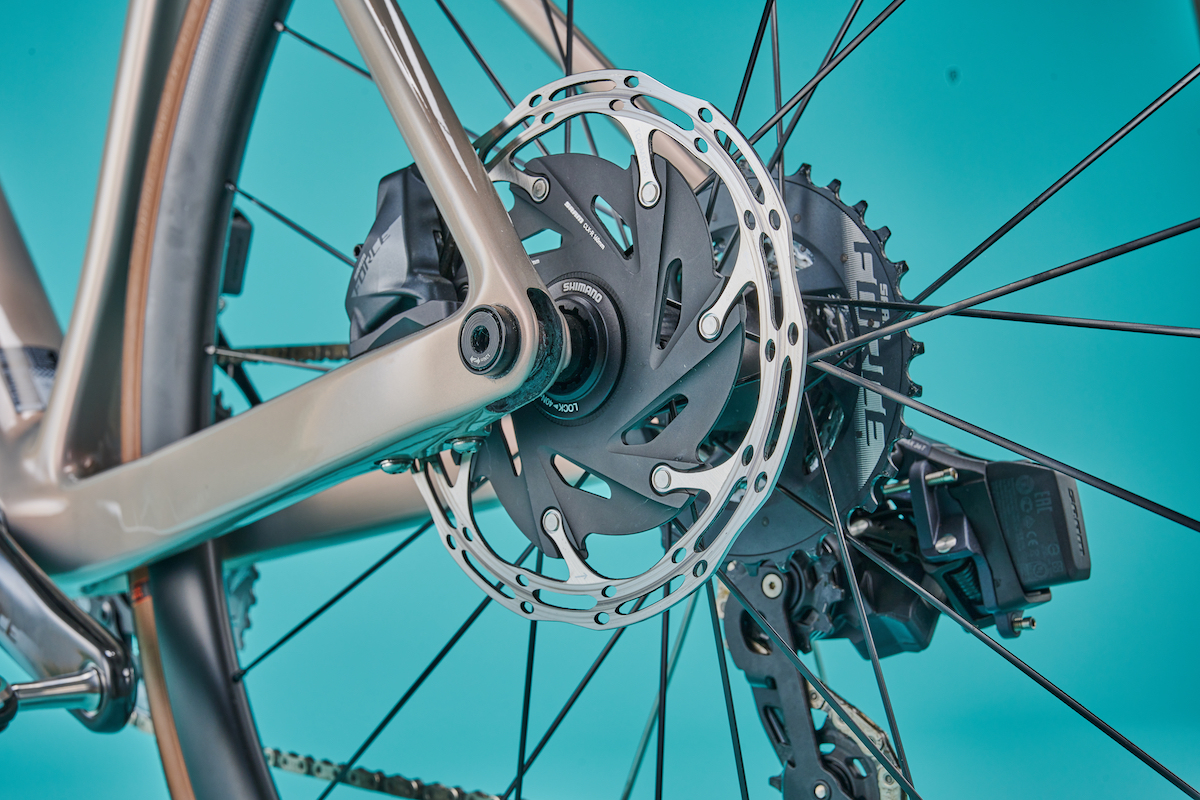
Scott Addict RC 10 - Build
That rear axle comes with a 1.5mm thread pitch that undoes at the threaded end, rather than the bolt head. Axles originally came with 1mm thread pitches but wider ones should mean the thread catches more easily. Great for pro mechanics having to do a rapid in-race wheel change, not so great if, like me, your thru axle adapter on your turbo trainer needs updating. (That’ll be £70 please!) Mind you, Scott’s instruction manual states very clearly that use of indoor trainers is not permitted with their carbon road bikes. So regardless of the axle thread pitch, you do so at your own risk.
The front axle is where we find one neat little integration. The axle’s skewer handle detaches to reveal a torx head screwdriver that will fit your stem clamp, bottle cage bolts and rear mech hanger. The body of that is a 6mm hex key which can be used to take out the rear axle.
Those axles hold in place the Syncros (Scott’s own brand) Capital 1.0 40mm carbon wheels. These 25mm internal diameter hookless rims are tubeless ready (check for tyre compatibility) and the 28mm Schwalbe One tyres eked out to 29mm at the widest point of the sidewalls.
They provided a beautifully plush ride that almost has no place on a 7.6kg race bike. The downside is the tight fit. I couldn’t roll the tyres off the rim with my hands (my go–to test to see how easy an innertube change would be), and that was in the comfort of my own home. Outside with cold fingers I wouldn’t stand a chance.
At the bottom of the left fork arm you’ll find the mount for the front disc brake calliper hidden behind a magnetic cover which held firmly in place whenever I clattered over rough roads. It keeps the fork lines clean and hides the ugly bolt heads. Top marks.
When I first saw the Creston bar and stem I have to admit to being overjoyed. A set of handlebars that clamp into a stem meaning bars can be rotated and stems swapped out for longer or shorter versions. Just how it should be. Integrated aero bars and stem are great if they fit you perfectly, but I’ll take the adjustability every time.
Cables from the SRAM Force levers are all integrated, running through the bars, then the top of the stem and down in front of the fork column, through the spacers and into the frame.
The stem has a top cover to give access to the cables. To get to them, first remove the top cap cover and then the cover that sits on top of the stem. Another nice integration that from a distance looks like a one piece stem, but get up close and it leaves a bit to be desired.
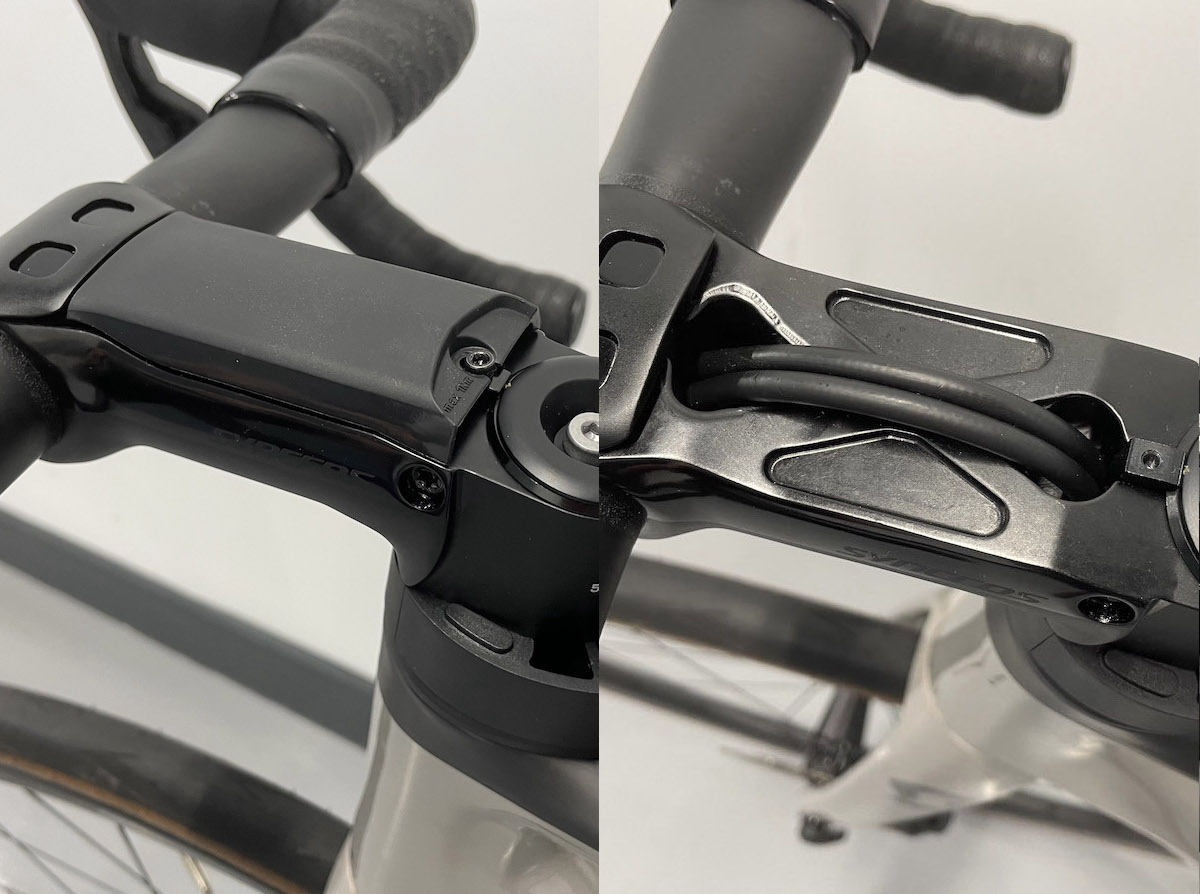
On a seven-and-a-half grand bike these two removable parts felt cheap and plasticy. The top cap cover comes off with a squeeze and a tug and I can’t believe it wouldn’t get a little rattley over time, whereas the top section of the stem is slotted in place then held there by a 2.5m hex key screw which is easily rounded out. I should know, I did it. The underside of the slot where the bolt goes through was not clean, and a shard of plastic got in the way of the bolt. As I tried to tighten it up the tool slipped out of the bolt head and rounded it off. Damn it.
I’m still not entirely sure what the advantage is of accessing the cables here. I sent an image to a mechanic friend, and he wasn’t 100% sure either. It might make it a little easier to run cables through for a mechanical or wired electronic groupset, but it still looks fiddly to me.
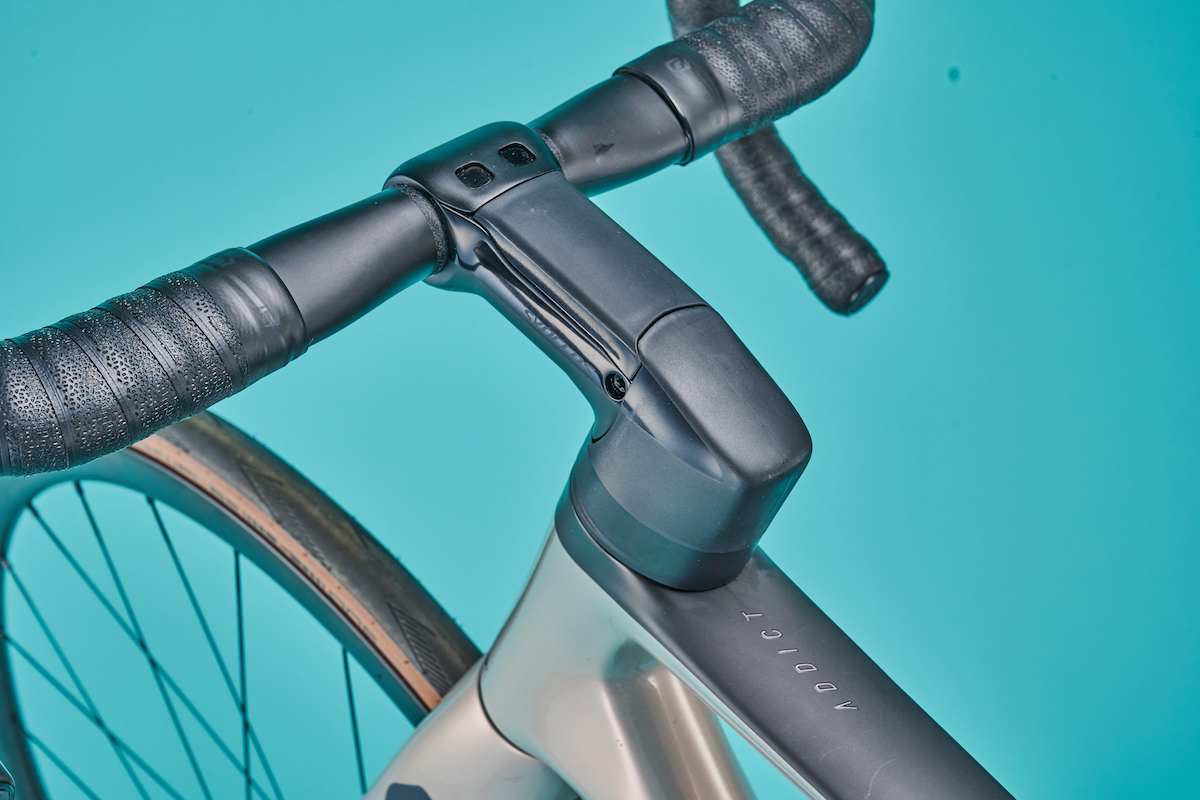
Scott Addict RC 10 - Ride
It’s a while since I’ve ridden an Addict. First launched in 2007 I rode one soon after and remembered a lightweight (Scott claimed at the time it was the lightest road frame available), responsive ride. The 10 didn’t disappoint, although it felt very different. But I’m betting that difference is mainly down to the transition from 23mm tyres pumped up to 100PSI to 28mm tyres ridden at 90PSI. The ride was wonderfully plush - no doubt carbon layup knowhow plays into this - and the addict with that HMX carbon is still carrying minimal weight. A quick glance down at the bottom bracket area and you know that it’s not going to be flexed by someone putting out 900 watts in a sprint. And that’s on a good day.
That plush ride came undone, for me at least, via the Syncros Belcarra saddle. Its flat profile did not suit me and no matter how I adjusted it, moving it forwards and backwards and tilting it, I couldn’t shift weight onto my sit bones and therefore relieve pressure on my perineum. I didn’t have a single pair of shorts that would measurably improve comfort, and most annoyingly the saddle clamp will only accommodate round rails. The rails on my preferred saddle (Specialized Power) are oblong.
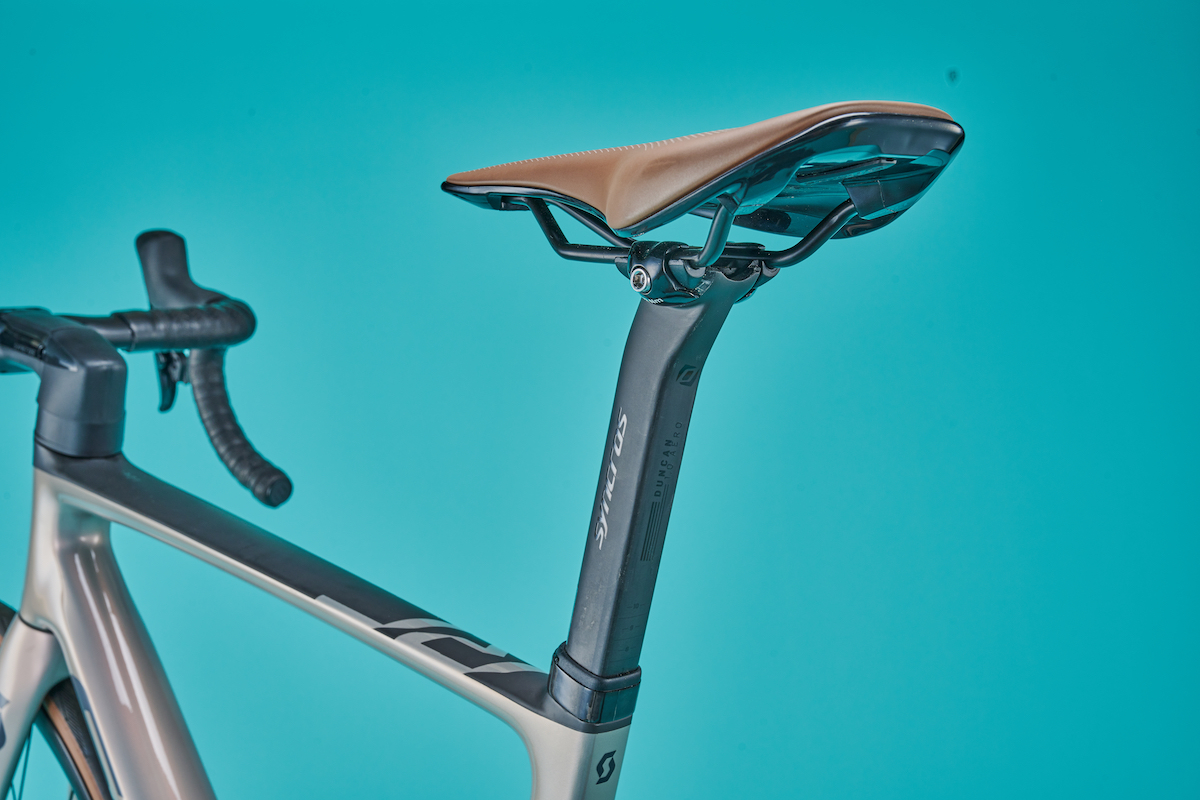
I’m now well versed with SRAM’s wireless groupset and there really is nothing that the range topping Red groupset can do that the Force can’t. I do however wonder if they might start reducing the size of the brake hoods. Prior to this I was riding an Ultegra equipped bike and I loved the slimmer brake hoods. I felt more in control as I could wrap my fingers all the way round. SRAM hoods have a bigger surface area which are comfortable and may spread load, but the bigger something is to grip the more tired the muscles in my hands get (because the muscles in the fingers are more stretched when under tension). It’s not that I didn’t like the Force hoods, it’s just that I loved the Ultegra ones.







